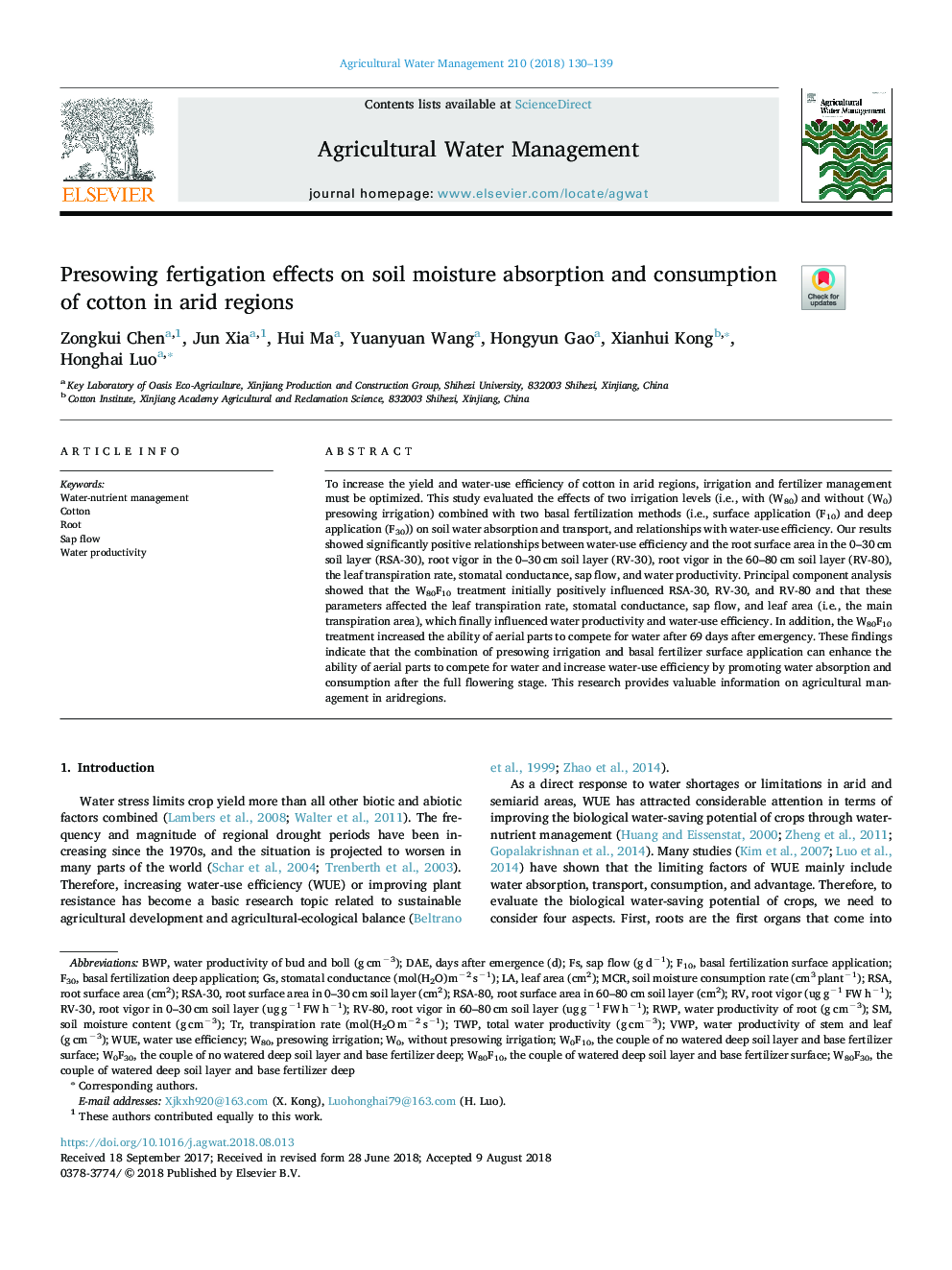| Article ID | Journal | Published Year | Pages | File Type |
|---|---|---|---|---|
| 8872713 | Agricultural Water Management | 2018 | 10 Pages |
Abstract
To increase the yield and water-use efficiency of cotton in arid regions, irrigation and fertilizer management must be optimized. This study evaluated the effects of two irrigation levels (i.e., with (W80) and without (W0) presowing irrigation) combined with two basal fertilization methods (i.e., surface application (F10) and deep application (F30)) on soil water absorption and transport, and relationships with water-use efficiency. Our results showed significantly positive relationships between water-use efficiency and the root surface area in the 0-30âcm soil layer (RSA-30), root vigor in the 0-30âcm soil layer (RV-30), root vigor in the 60-80âcm soil layer (RV-80), the leaf transpiration rate, stomatal conductance, sap flow, and water productivity. Principal component analysis showed that the W80F10 treatment initially positively influenced RSA-30, RV-30, and RV-80 and that these parameters affected the leaf transpiration rate, stomatal conductance, sap flow, and leaf area (i.e., the main transpiration area), which finally influenced water productivity and water-use efficiency. In addition, the W80F10 treatment increased the ability of aerial parts to compete for water after 69 days after emergency. These findings indicate that the combination of presowing irrigation and basal fertilizer surface application can enhance the ability of aerial parts to compete for water and increase water-use efficiency by promoting water absorption and consumption after the full flowering stage. This research provides valuable information on agricultural management in aridregions.
Related Topics
Life Sciences
Agricultural and Biological Sciences
Agronomy and Crop Science
Authors
Zongkui Chen, Jun Xia, Hui Ma, Yuanyuan Wang, Hongyun Gao, Xianhui Kong, Honghai Luo,
